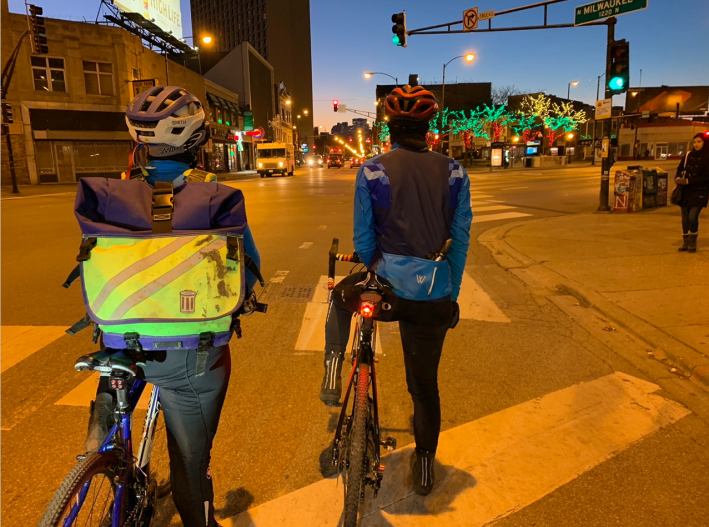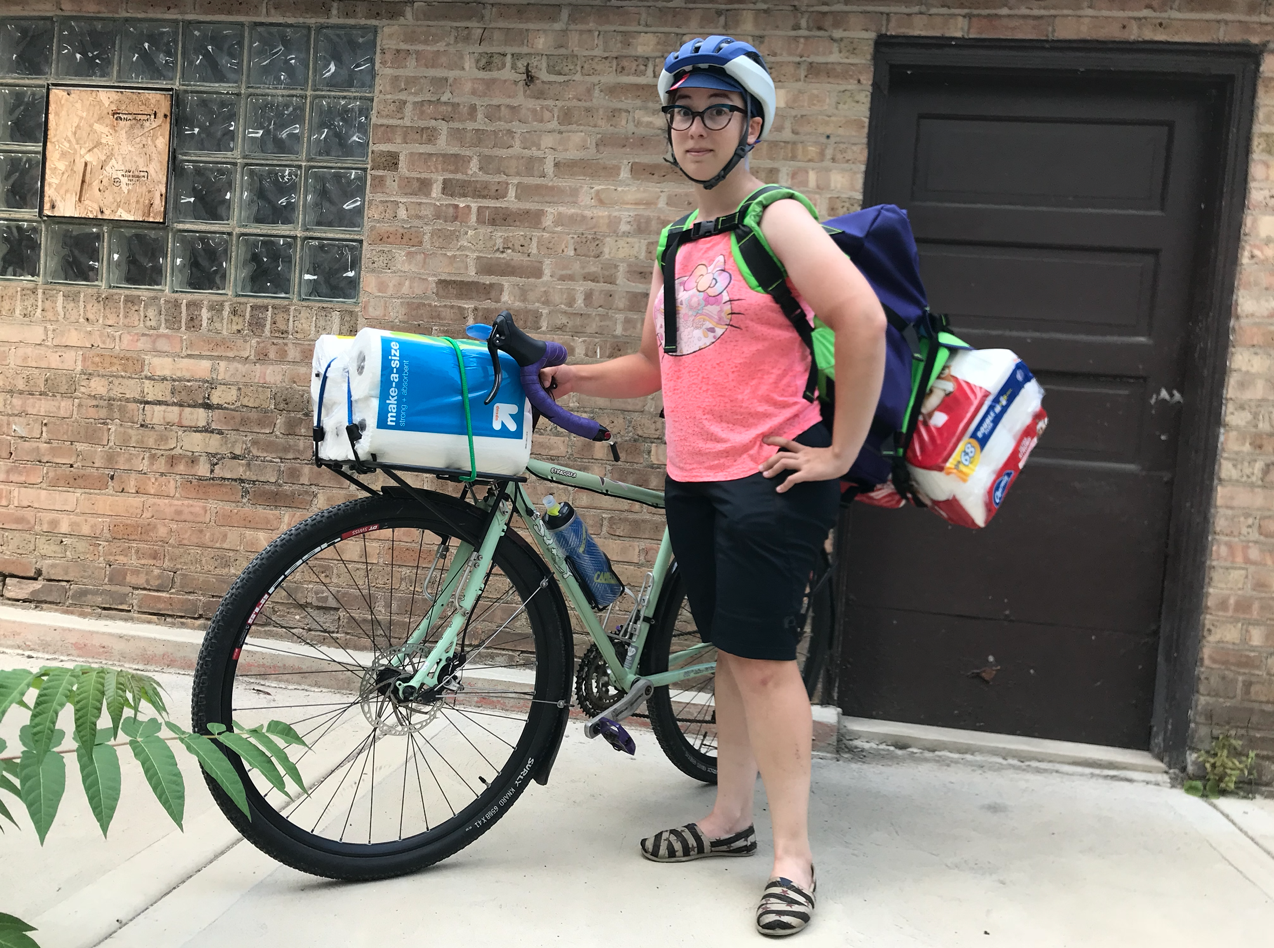During the COVID-19 pandemic, it's important to avoid riding transit if you can, to reduce your viral exposure and help de-crowd buses and trains, making conditions safer for transit-dependent people and transit employees. Cycling is a great way to get around, as well as maintain your physical and mental health during these challenging times, while observing social-distancing rules. However, Mayor Lori Lightfoot recently shut down the 18.5-mile Lakefront Trail, as part of the closure of all shoreline parks due to crowding concerns, eliminating Chicago's most important car-free bike commuting route.
Therefore, knowing how to ride safely and confidently on city streets is more important than ever. You can find alternatives to the LFT on our Low-Stress Lakefront Pandemic Cycling Route map; side-street on itineraries in the central city on the Mellow Chicago Bike Map; and the locations of all bikeways on the citywide Chicago Bike Map.
Here are some tips for safe on-street riding from seasoned Chicago cyclist Lisa Hilleren. - John Greenfield, editor
I’ve been bike commuting in Chicago almost every day for the last seven years. Over that time I’ve personally experienced almost every way a driver can hit you, and have learned a lot of things about staying safe and comfortable. If you’re new to the streets, or just haven’t been around in awhile, here are some of my top tips to keep you as safe as possible. While there's no way to be 100-percent safe from the threat of reckless, intoxicated, and distracted motorists on streets that lack physically protected bikeways, but here are some ways to ride defensively and maximize safety.
Ride in a straight line at a constant speed. The more predictable you are, the better.
If you must change speed or direction, the most easily understood ways to communicate this are:
- Point your arm in the direction you intend to go. I literally point left or right with my fingers with my arm fully outstretched. Ideally you want to give people at least three seconds notice of your intended turn or lane change.
- Stopping or slowing down can also be indicated with a hand signal. Place your left hand behind you, palm open and facing back.
Don’t ride with headphones. One of your most important senses is your hearing. You cannot safely see what is behind you at all times while riding, but you can listen for cars and trucks approaching behind you. If you hear someone driving aggressively behind you, you can take steps to make sure they don’t mow you down: slow down, move right, get off the street entirely if they are being that insane. Yes, I’ve done that. (Note that some bike safety experts, such as Outside magazine columnist Eben Weiss, aka Bike Snob NYC, argue that "There is absolutely nothing wrong with listening to earbuds if whatever you're listening to isn't too loud." -Ed)

Stay out of the door zone whenever possible. The door zone is three feet from the side of parked cars. If someone were to open their door as you passed, they would hit you and knock you from your bike. If there is a bike lane or marked “sharrows” (bike-and-chevron symbols) riding near the left edge of the bike lane or sharrow will keep you out of the "door zone." If you have no choice but to ride in the door zone:
- Look through the back windows of cars. Are there people inside?
- Look in the driver’s side mirror. If you see the driver's face in the mirror looking at you, you know they see you and probably won’t door you. If you don’t see their face, assume they might be throwing open their door at any moment and move left if traffic is clear. Otherwise slow down.
- If riding between stopped traffic and parked cars, or in any situation where your view is obstructed to less than 15 feet, slow down. I personally do not ride any faster than 14 mph in these situations because that is as fast as I am willing to crash at. These conditions were responsible for 2 out of the 3 times I’ve been knocked off my bike in a crash.
Don’t trust that a driver is going to continue to proceed in a straight line just because you don't see a turn signal, because people are often really terrible about using their blinkers. I’ve learned to read the following signs as potential indications of a turn:
- If a car is out of alignment with the line of cars in front of it. Driving further to the right may be an indication of a right turn coming up, driving further to the left may indicate a left turn.
- If a driver starts drifting to one side of the lane or other indicating a possible turn to the direction of the lane drifting.
- If a driver slows down significantly.
When motorists are illegally holding their phones and driving (there are a lot of them!), it's easy to see that through the windows. Avoid these people. Give them extra space because they are incredibly unpredictable and will have suppressed reaction time to all situations.
Dealing with people driving aggressively is an issue that lots of folks have differing perspectives on. If someone is behaving aggressively towards me when I am on my bike, I do not engage. I feel safer not escalating a situation because I am never sure how drivers will react and being chased by someone in a large metal kill box is terrifying. I only yell if people are in immediate danger of driving into me or dooring me.
You will probably be fine. I rode 150+ miles a week on city streets for five years before a driver ever knocked me off my bike. Also, the reduction in traffic during Stay at Home definitely also reduces the odds of crashes (although there are plenty of jerks taking advantage of the lack of congestion to speed.)
Find answers from doctors to cycling-related COVID-19 health questions in this Bicycling magazine article.
Here are some tips on preventing the spread of COVID-19, and advice for Chicagoans on what to do if you think you may have been exposed to the virus.
Lisa Hilleren is a project manager at a graduate school in Chicago whose cycling adventures include daily commuting, occasional touring, a lot of criterium, track, and cyclocross racing, and (during non-pandemic-times) finding the best places to stop for brunch. Follow her on Twitter at @yo_uterus.






